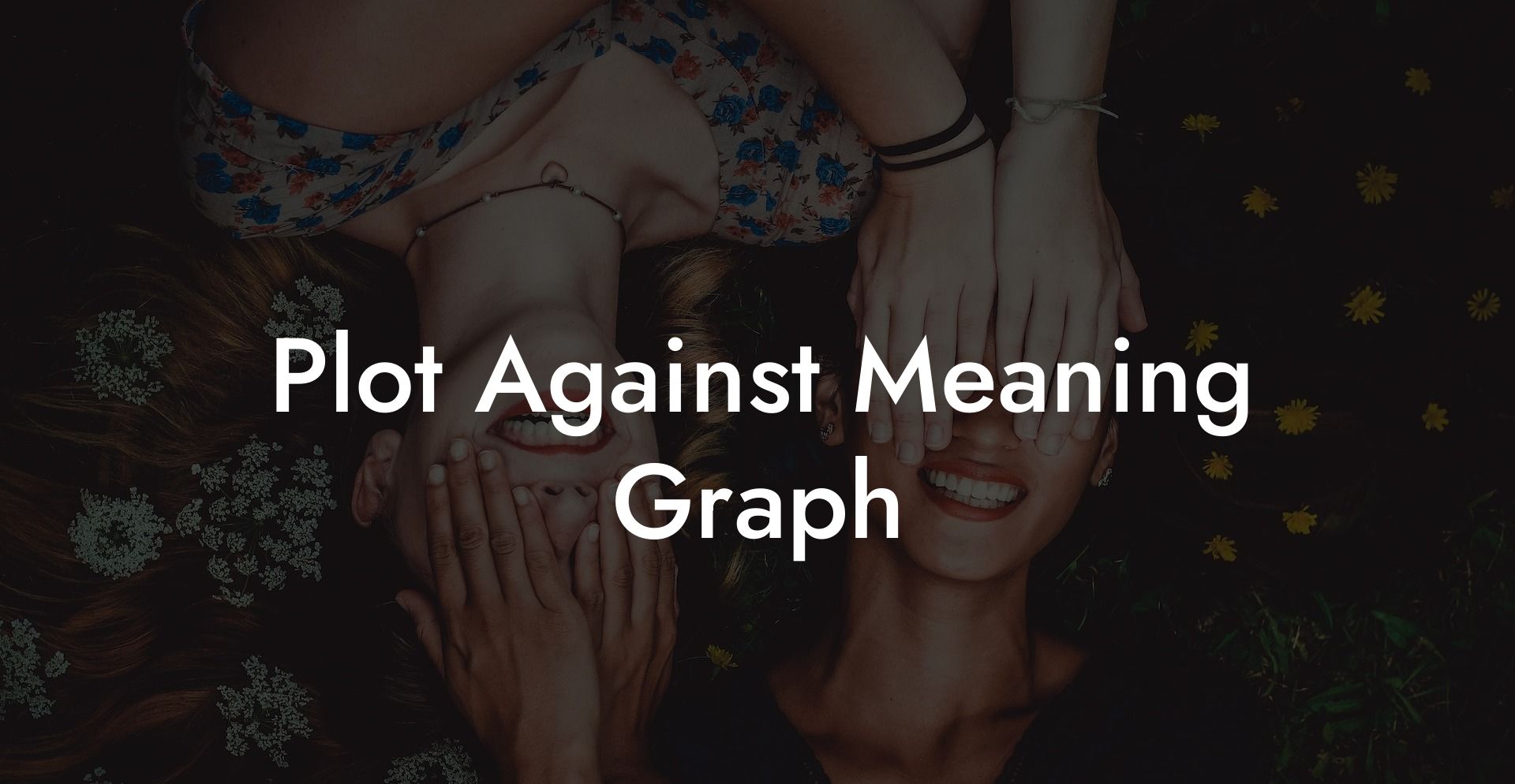When it comes to relationships, sometimes we find ourselves drawn to different approaches to love and commitment. Navigating the complex world of monogamy, non-monogamy, and polyamory can be a daunting task for those seeking to understand the dynamics and rules of each lifestyle. For that reason, we have developed a unique tool - the Plot Against Meaning Graph. This article aims to provide you with insight into this powerful instrument and how it can help you understand and explore the different relationship structures with ease.
Plot Against Meaning Graph Table of Contents
What is the Plot Against Meaning Graph?
The Plot Against Meaning Graph is a visual guide designed to provide a comprehensive understanding of the various aspects and nuances of monogamy, non-monogamy, and polyamory. The graph serves as a roadmap to each relationship structure, plotting out the many variables, factors, and intersections that make up these diverse love dynamics.
Monogamy
On the graph, monogamy is represented by a stable and steady line. This symbolizes the commitment to one partner, as well as the shared aspects and values that come with this form of relationship. These include trust, communication, and the ability to balance personal and shared experiences with one's partner.
Non-monogamy
Moving into the realm of non-monogamy, the graph begins to introduce various fluctuating lines. These represent the many different shades of non-monogamous relationships, including open relationships, swinging, and casual dating. Here, we can see how these lines often overlap and intersect, highlighting the unique complexities of each type of non-monogamous relationship.
Polyamory
As we delve deeper into the graph, we find ourselves in the intricately woven world of polyamory. In this section, a web-like pattern emerges, showcasing the many interconnected relationships and love dynamics that exist within polyamorous communities. Relationships within polyamory can take on many forms, such as triads, quads, and even larger group configurations, all connected by the principles of trust, communication, and consent.
How to Use the Plot Against Meaning Graph
The true power of the Plot Against Meaning Graph lies in its ability to help individuals visualize and explore their personal relationship preferences and experiences. By examining the graph, one can gain a better understanding of their own relationship inclinations and how they may align with a monogamous, non-monogamous, or polyamorous lifestyle.
To utilize the graph, begin by identifying where your personal experiences and values align within the depicted relationship structures. Next, consider any potential areas of growth or change within your current or desired relationships. By conducting this self-analysis, you can determine which relationship structure best aligns with your vision of a fulfilling and harmonious love life.
Plot Against Meaning Graph Example:
Let's consider a couple, Jane and John, who are curious about exploring non-monogamy in their relationship. They look to the Plot Against Meaning Graph for guidance. By examining the fluctuating lines in the non-monogamy section of the graph, Jane and John realize they are interested in having an open relationship where they can engage with other partners in a controlled and consensual manner.
As they follow the graph, they learn about the importance of communication, setting boundaries, and upholding trust in maintaining a healthy and successful open relationship. Using this visual tool, the couple can confidently navigate their journey into non-monogamy with a better understanding of the dynamics and complexities involved.
No matter your relationship preferences, the Plot Against Meaning Graph serves as an invaluable tool for visualizing and understanding the intricacies of monogamy, non-monogamy, and polyamory. Are you ready to put your own love life under the microscope and explore your relationship capacity using this graph? If you found this guide helpful, don't forget to share it and explore more insightful posts on The Monogamy Experiment website! Dive into the challenging and exciting world of diverse relationship structures today!













